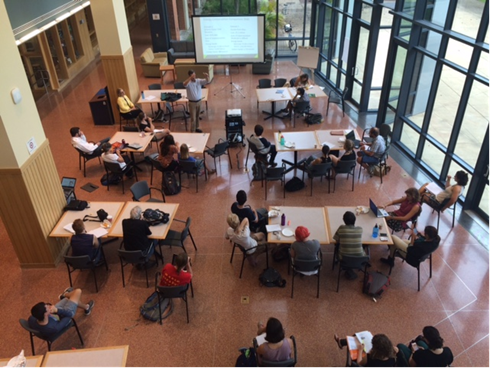Vision
Aging Infrastructure

At the beginning of the Sustainable Infrastructure Program, Oberlin College’s campus energy system was in some cases 100 years old, which was beyond its expected lifespan. Despite careful maintenance over decades, parts of the system were beginning fail, including leaks and underground pipe collapses that caused campus disruption, unexpected costs, and damage to property. To make permanent and meaningful change on campus, leaders decided to replace the aging infrastructure with a low-carbon energy system.
In 2016, the college released a new master plan for sustainable infrastructure, which analyzed a variety of options for both the heating system and its primary source of energy.
In March 2019, trustees approved a plan to utilize an “energy district” approach with a single source of heat and cooling for most campus buildings.
Decarbonization Plan
The SIP work had three main components:
- Converted the common source of heating and cooling across campus to 850 geothermal wells 600 feet deep. Water source heat pumps, powered by renewable electricity from OMLPS, extract heat from the wells in winter for heating and reject heat to the wells in summer for cooling.
- Replaced the deteriorating steam and chilled water pipes with new hot water and chilled water pipes.
- Retrofitted campus buildings to accommodate the new energy system and added air conditioning to 11 more buildings.
Oberlin also took the opportunity to expand fiber networks, expand fire protection capabilities, and upgrade mechanical and electrical systems at a reduced cost.
Learn more about the technology.

Funding
Funding for the project included some of higher education’s first Certified Climate Bonds. This issuance marked the lowest cost of long-term financing Oberlin College has ever achieved.
Benefits
The project has helped Oberlin reach its ambitious goal of carbon neutrality using efficiencies, clean energy sources, and offsets to bring the institution’s net release of carbon dioxide to zero in 2025.
The transition reduces Oberlin College’s water use by more than 5 million gallons per year, reduces sewer discharge by more than 4 million gallons per year, and improves campus energy efficiency by more than 30 percent.
Carbon Neutrality Partners
Ever-Green Energy has been a partner to Oberlin College since 2015. Ever-Green led the Carbon Neutrality Implementation Plan (2016) for the Oberlin campus with an emphasis on energy and water utilities and led implementation of the planning recommendations, which include design of the campus conversion from steam to hot water, verification of the optimal carbon-free energy supply strategies, utility organizational planning, development of financing strategies, and continued campus and community engagement.
As Oberlin’s Owner’s Representative, Ever-Green led design and implementation of the overall SIP program through startup and commissioning and has operated the new energy systems since 2021. In 2022, Ever-Green also began operations and maintenance of the college’s solar PV including the 2.7 MW array on campus.
